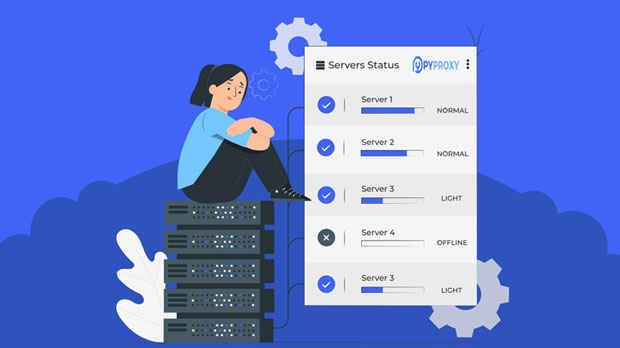Setting up a socks5 proxy on a router is a powerful method to enhance internet performance across your entire network. Unlike traditional VPNs, a SOCKS5 proxy offers a more flexible and faster solution for improving browsing speeds, streaming quality, and securing network traffic. With SOCKS5, the proxy server routes internet traffic through a dedicated server, reducing latency and enhancing performance without the need for individual device configuration. This method works for all devices connected to your router, offering a seamless experience and network-wide acceleration. In this article, we’ll guide you through the step-by-step process to set up a SOCKS5 proxy on your router to achieve these benefits. Understanding SOCKS5 Proxy and Its BenefitsBefore diving into the setup process, it’s essential to understand what a SOCKS5 proxy is and why it’s beneficial for network acceleration.What is SOCKS5? SOCKS5 is a protocol used to route network traffic through a third-party server, offering more control over how data is transmitted over the internet. Unlike traditional proxies that focus on web traffic (HTTP/HTTPS), SOCKS5 handles all types of internet protocols, including HTTP, FTP, and even peer-to-peer connections. This versatility makes it suitable for a wide range of applications, including gaming, streaming, and secure browsing.Why Choose SOCKS5 for Full Network Acceleration? When configured on a router, a SOCKS5 proxy can improve network performance in several ways:- Reduced Latency: By routing traffic through faster, less congested servers, SOCKS5 can reduce lag and improve response times for online activities like gaming or video streaming.- Better Bandwidth Utilization: socks5 proxies allow better data routing, helping optimize bandwidth usage. This can be particularly helpful for users who share a connection across multiple devices.- Enhanced Security: While not a replacement for encryption, SOCKS5 adds an extra layer of security by masking your IP address and preventing certain types of cyberattacks.Step-by-Step Guide to Setting Up SOCKS5 Proxy on Your RouterSetting up a SOCKS5 proxy on a router may seem complex at first, but with the right steps, you can easily configure it to optimize your entire network’s performance. Below is a step-by-step guide.Step 1: Verify Router Compatibility Not all routers support proxy configurations, so the first thing to do is ensure that your router supports SOCKS5 proxy functionality. Many modern routers have this feature built-in, while others may require custom firmware (like DD-WRT, OpenWRT, or Tomato) to enable this feature.- If your router does not support SOCKS5 directly, you might need to flash it with compatible third-party firmware.- If you're unsure, consult your router’s manual or the manufacturer's website to verify whether SOCKS5 configuration is supported.Step 2: Select a socks5 proxy server Next, you'll need access to a SOCKS5 proxy server. These servers typically require authentication via a username and password, which ensures only authorized users can access the proxy.- You can either purchase SOCKS5 proxy access from a provider or set up your own SOCKS5 proxy server if you have the technical know-how.- Ensure that the SOCKS5 server you select is fast, secure, and reliable to achieve optimal results.Step 3: Access Your Router’s Admin Panel To configure your router’s proxy settings, you must first log into the admin panel. This is typically done by entering the router’s IP address in a web browser (usually 192.168.1.1 or 192.168.0.1). Once logged in, you may be asked for a username and password (this is different from your Wi-Fi credentials).- If you have never changed these settings, check the router’s manual for default login credentials.- Be sure to use a secure password for your admin panel to protect your router from unauthorized access.Step 4: Locate Proxy Settings in the Router Interface Once inside the router’s admin panel, look for the section where you can configure network settings, specifically under the "WAN" or "Network" tab. The exact location will vary by router brand, but it will generally be under the "Advanced Settings" or "Internet Settings."- Some routers may have a dedicated "Proxy" section under the WAN settings.- If you are using third-party firmware, you may need to navigate to the "Services" or "VPN" settings to find the SOCKS5 proxy configuration options.Step 5: Enter SOCKS5 Proxy Server Details In the appropriate section, input the SOCKS5 server’s address, port number, and authentication credentials (if required). The information you need should be provided by your SOCKS5 provider.- The format generally looks like this: - Proxy Address: [your SOCKS5 proxy server IP] - Port: [default SOCKS5 port is typically 1080] - Username: [if provided] - Password: [if provided]Step 6: Apply Changes and Restart the Router After entering the necessary information, save the changes and restart your router to apply the new settings. This will enable the SOCKS5 proxy for all devices connected to your router.- Some routers may have a "Test Connection" feature that allows you to verify whether the proxy settings were correctly applied before restarting the router.Potential Issues and TroubleshootingWhile setting up a SOCKS5 proxy on a router is generally straightforward, there may be some common issues that could arise during the process.1. Connection Failures If the connection to the SOCKS5 server fails, double-check the IP address, port, username, and password you entered. Ensure there are no typos and that the proxy server is operational.2. Slow Internet Speeds If your internet speed decreases after setting up the SOCKS5 proxy, this could be due to several factors, including server congestion, incorrect settings, or network interference. Try connecting to a different SOCKS5 server or troubleshooting your router’s connection.3. Incompatibility with Certain Devices Some older or less common devices may have difficulty connecting to the proxy server. If a specific device cannot access the internet, you may need to manually configure the SOCKS5 proxy on that device or exclude it from the router’s proxy settings.Conclusion: Maximizing Network Performance with SOCKS5Setting up a SOCKS5 proxy on your router can significantly boost internet speeds, reduce latency, and improve overall network performance. By applying the proxy at the router level, you ensure that all devices connected to your home or office network benefit from improved browsing, streaming, and gaming experiences.With just a few simple steps—verifying router compatibility, selecting the right SOCKS5 server, configuring your router, and applying the changes—you can accelerate your entire network’s performance without the need for individual device configurations. However, make sure to test the setup and troubleshoot any issues to ensure that the proxy is functioning optimally.Ultimately, SOCKS5 proxies are a flexible and efficient solution for those seeking to optimize their network without investing in costly hardware upgrades or relying on individual device configurations. With this setup, you can enjoy faster speeds, reduced lag, and improved security for all your devices connected to your router.
Jan 09, 2025
![arrow]()




























































